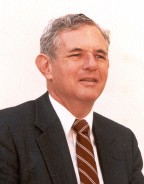- unknown (b.)
Bio/Description
With 50 years of experience designing avionic, navigation, communication, and computer-automation systems, he spent much of his career working for TRW, NASA, and Litton, followed by running his own practice for 18 years. He grew up in New York, teaching himself calculus from a library book at the age of 11 or 12. He attended the Bronx High School of Science and won a New York City-wide high school math competition. He was offered a scholarship to New York University math department, but attended Cooper Union in New York City. He received a B.S. in Mechanical Engineering from Cooper Union and an M.S. from Harvard University with a concentration in Electrical Engineering. He earned a Ph.D. in Instrumentation from Massachusetts Institute of Technology in 1960. From 1960 to 1965, he was section head at Litton's Guidance and Control Division where he designed and analyzed some of the earliest multi-sensor navigation systems. From 1965 to 1968, he served as Deputy Manager for Lunar Module Guidance and Control at NASA's Johnson Space Center where his office directed the contractors designing two inertial navigation systems, an alignment telescope, and the flight controls. From 1968 to 1981 at TRW, he served as Chief Engineer for Spacelab Avionics; head of System Engineering for Space Shuttle Avionics, and Project Engineer for the electronics of the inertial upper stage and a nuclear power plant, among his many assignments. Presently, he is a consulting engineering at Kayton Engineering Company serving clients in the areas of automotive electronic systems, automated process systems, upper-stage spacecraft, a satellite interceptor, commercial communication systems, numerous aircraft avionic systems, and a dozen land navigators. In the 1970s he had significant involvement in the Aerospace Society of the IEEE, serving two terms as President of its Aerospace and Electronic Systems Society (AESS). He found the IEEE useful in his career as a way of meeting colleagues worldwide, and as a convenient place to publish research and reduce duplicated effort. He discusses what he thinks will be the future of guidance and navigation systems, predicting the spread of for-profit GPS systems, the spread of Micro-Electro-Mechanical Systems (MEMS), and the replacement of Very High-Frequency Omni-Ranges (VOHR), which currently control the airways, by GPS systems. He is a Life Fellow of the IEEE and was an elected member of the corporate Board of Directors, and He has been Technical Chairman for several conference sessions, keynote speaker, and an active member of standards committees for navigation sensors and computers for nuclear power plants. He taught at UCLA and is an IEEE Distinguished Lecturer. He is the author of numerous papers and co-author, with Walter R. Fried, of the standard reference text, ?Avionics and Navigation Systems and of Navigation: Land, Sea, Air, and Space? (1st and 2nd editions), John Wiley & Sons, May 6, 1997 - Technology & Engineering - a complete guide to the art and science of modern electronic navigation, focusing on aircraft. He is a past recipient of the IEEE's Millennium Medal. He is the recipient of the 2006 Kershner Award for his work on avionic, navigation, communication, and computer-automation systems. He is listed in Who's Who in Engineering, Who's Who in America, and in American Men and Women in Science.
-
Gender:
Male -
Noted For:
Designer and analyzer of some of the earliest multi-sensor navigation systems -
Category of Achievement:
-
More Info:


